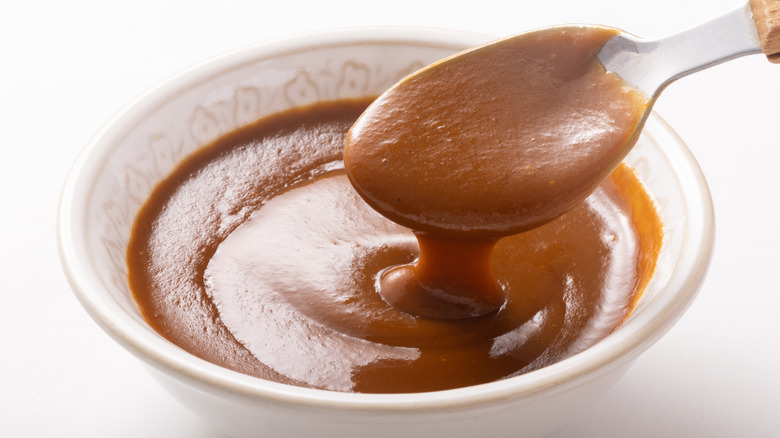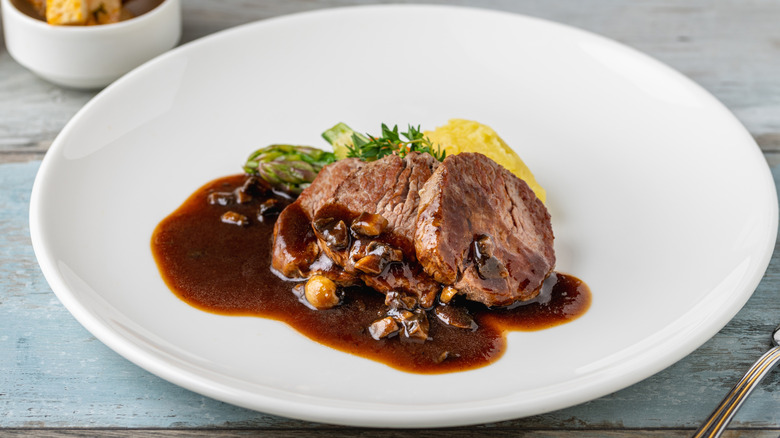How To Use Espagnole, One Of The 5 Mother Sauces Of French Cuisine
Look into recipes of classic French cuisine, and it won't be long before you see mention of the five mother sauces. Accredited to the 19th-century chef Marie-Antoine Carême, and later updated by Auguste Escoffier, this sauce assortment is regarded as an essential culinary foundation.
Each type is both widely employed on its own, and transformed into further creations. An especially utilized sauce on the list is the Spanish born espagnole. Essentially a dark roux (don't confuse it with a slurry), this sauce comes together by reducing veal stock with carrots, onions, garlic, celery, tomatoes, and seasonings. It's a rich and aromatic creation that comes with a wide array of uses.
Most commonly, espangole is combined in equal parts with stock, and reduced into the more concentrated demi-glace. Finished with sherry wine, thick demi-glace adds a complex savory note to stews and soups, or can even be transformed into a further iteration of pan sauces used to finish proteins. And if you're searching for other flavors, espagnole can be used as a base for even more sauces beyond demi-glace, thereby evincing its foundational status.
Espagnole forms the base of numerous sauces
In espagnole's unassuming brown appearance, there's a dense saturation of flavor. The aromatics of the mirepoix, acidity of the tomato, umami of beef broth, and gentle seasonings meld into a sauce that's readily repurposed. So when you're cooking with espagnole, don't fret about overwhelming creations; rather treat the food as a remarkably flexible starting point.
Espagnole easily absorbs additional flavors, and due to its liquid consistency, can be further reheated. Use it in French classics like bourguignonne sauce, enhancing the base with herbs and red wine to complement beef. Or, turn espagnole into a demi-glace, then add shallots and mushrooms to craft a flavorful and thick mushroom sauce. With a dash of white wine, espagnole can also be reduced into Chasseur sauce. The options can branch out into a more spiced direction, too: Mustard turns espagnole into Robert sauce, whereas adding peppers, onions, tomatoes, and Creole seasoning will make sauce Africaine.
Plus, don't forget you can serve the sauce standalone as well; poured over proteins like chicken or used as one of the best sauces to pair with steak and fries. Whether it's mashed potatoes or a side of polenta, many sides too will shine from the complex and aromatic espagnole. So next time you're crafting the sauce, go for a large batch — it certainly won't go to waste.

